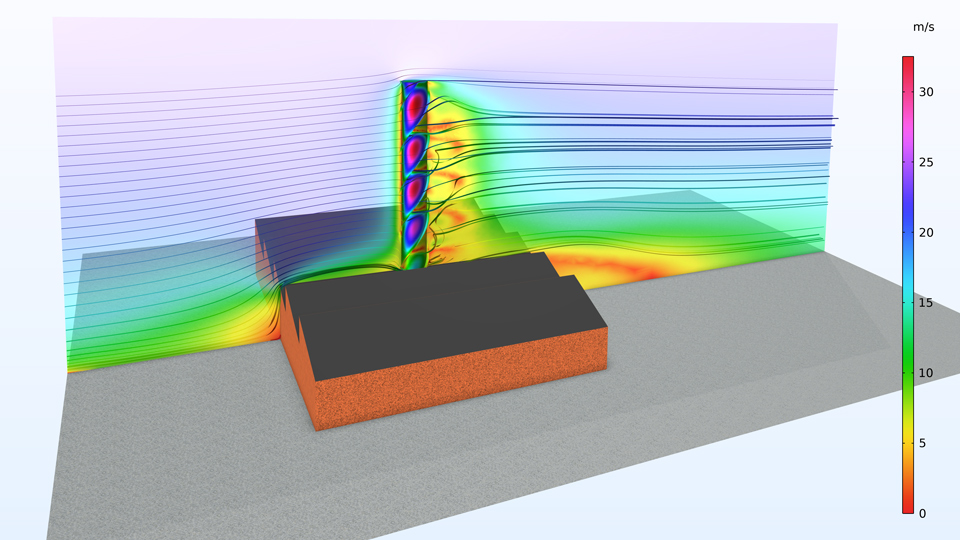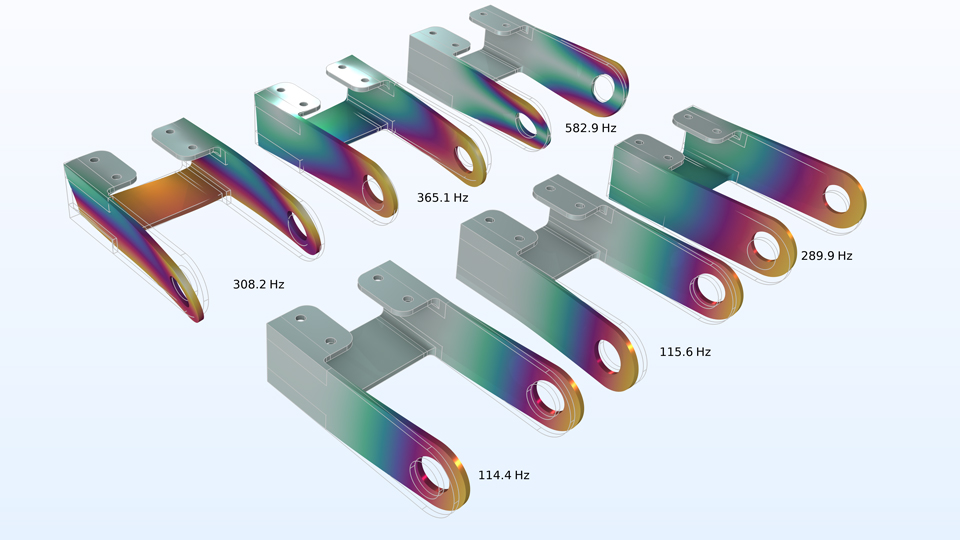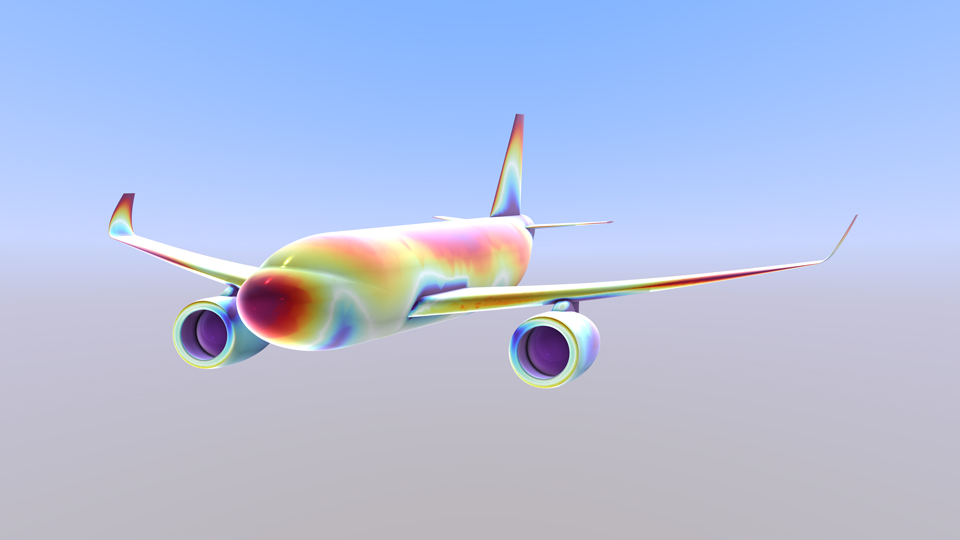Results and Visualization Updates
COMSOL Multiphysics® version 6.4 introduces several enhancements for results and visualization, including expression-based transparency, more efficient creation of plot arrays, and various improvements to streamlines. Read about these updates and more below.
Expression-Defined Transparency
The Transparency subfeature can now be used to define transparency with an expression, similar to the Color Expression option. This functionality provides control of transparency from model quantities, parameters, or functions, enabling advanced visual effects such as fading, thresholding, and multivariate visualization. For example, it is possible to color by temperature while varying transparency by stress or concentration, reveal interior regions without cutting, and create more realistic translucent materials. Expression-driven transparency works with most 3D plot types, as well as with 2D plots when using a Height Expression.

Solution Array
The new Solution Array subfeature enables side-by-side visualization of multiple solution states, such as different times, eigenmodes, or parameter values, within a single plot group. It automatically replicates a plot for each selected state, making it easy to compare time evolution, mode shapes, or parameter variations without replotting. The arrangement and styling are shared across tiles, ensuring consistent color scales and viewpoints for visually consistent and reproducible comparisons.
Improvements to Streamlines
Magnitude-controlled point distribution can now be used for streamlines starting on selected boundaries. This can result in more streamlines showing the qualitatively interesting parts of the flow than if a uniform point distribution is used. In addition, fourth-order Runge–Kutta integration has been added, with an option for adaptive step length, which can result in more accurate streamlines.
3D streamlines are now rendered in a way that gives a perception of depth, which improves visualization when many streamlines are clustered closely. The same new rendering technique is also used for point and ray trajectory plots.
Environment Map Improvements
The environment map functionality has been made more flexible. This enhanced functionality can be used to improve the visualization of shiny materials and serve as the background for plots or geometries. Key updates include:
- Support for sky–ground maps defined by four colors: two for the sky and two for the ground
- Support for user-defined maps created from an equirectangular image or a cube map
- Five new predefined environment maps have been added: four based on images and one sky–ground map.



